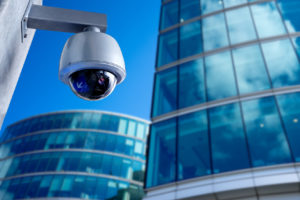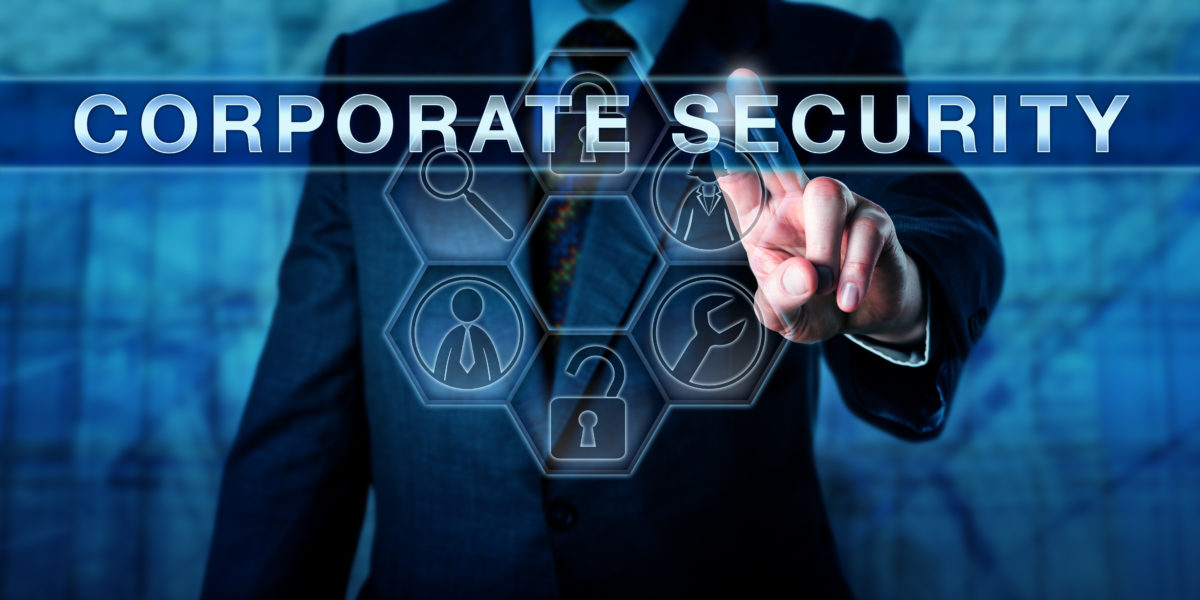A Plan for Corporate Security Excellence: Protecting Your Business
A Plan for Corporate Security Excellence: Protecting Your Business
Blog Article
From Cybersecurity to Physical Procedures: Reinforcing Business Safety in an Altering World
By combining the staminas of both cybersecurity and physical protection, firms can create a thorough protection approach that deals with the varied array of risks they encounter. In this conversation, we will certainly check out the altering risk landscape, the need to integrate cybersecurity and physical safety and security, the implementation of multi-factor authentication actions, the relevance of staff member understanding and training, and the adaptation of safety procedures for remote labor forces. By examining these key locations, we will certainly get useful insights into just how companies can enhance their corporate protection in an ever-changing globe.
Comprehending the Changing Hazard Landscape
The advancing nature of the modern-day world requires an extensive understanding of the changing hazard landscape for efficient corporate safety and security. In today's interconnected and digital age, threats to corporate safety have actually become much more complicated and innovative. As innovation breakthroughs and businesses become increasingly dependent on digital framework, the capacity for cyberattacks, information breaches, and other security breaches has actually considerably raised. It is important for organizations to stay educated and adjust their safety and security determines to deal with these advancing risks.
One secret element of recognizing the transforming hazard landscape is identifying the various kinds of hazards that organizations face. Additionally, physical risks such as theft, vandalism, and corporate espionage remain prevalent concerns for services.
Surveillance and analyzing the threat landscape is vital in order to identify potential threats and susceptabilities. This involves remaining upgraded on the most up to date cybersecurity patterns, analyzing hazard knowledge reports, and carrying out routine risk analyses. By comprehending the altering hazard landscape, companies can proactively execute appropriate safety and security actions to alleviate dangers and protect their possessions, credibility, and stakeholders.
Integrating Cybersecurity and Physical Security
Incorporating cybersecurity and physical safety and security is essential for comprehensive corporate defense in today's interconnected and electronic landscape. As companies significantly depend on innovation and interconnected systems, the limits in between physical and cyber dangers are coming to be obscured. To successfully secure versus these threats, an all natural strategy that combines both cybersecurity and physical safety and security steps is important.
Cybersecurity concentrates on safeguarding electronic assets, such as information, networks, and systems, from unauthorized accessibility, disruption, and theft. Physical protection, on the other hand, includes measures to safeguard physical properties, people, and centers from threats and vulnerabilities. By incorporating these two domains, organizations can attend to susceptabilities and threats from both digital and physical angles, consequently boosting their overall safety stance.
The integration of these two techniques permits for a much more comprehensive understanding of safety threats and enables a unified reaction to occurrences. For instance, physical access controls can be improved by incorporating them with cybersecurity protocols, such as two-factor authentication or biometric recognition. Likewise, cybersecurity procedures can be enhanced by physical safety actions, such as security cameras, alarms, and protected gain access to points.

Implementing Multi-Factor Authentication Actions
As organizations progressively focus on comprehensive safety actions, one effective technique is the execution of multi-factor authentication procedures. Multi-factor verification (MFA) is a safety and security technique that calls for users to supply numerous kinds of identification to access a system or application. This method more info here includes an added layer of defense by combining something the individual recognizes, such as a password, with something they have, like a fingerprint or a safety token.
By carrying out MFA, companies can substantially boost their security stance - corporate security. Traditional password-based authentication has its constraints, as passwords can be conveniently compromised or failed to remember. MFA minimizes these dangers by adding an added verification variable, making it extra difficult for unauthorized individuals to get to delicate details
There are numerous sorts of multi-factor verification techniques readily available, consisting of biometric verification, SMS-based confirmation codes, and pop over to this web-site equipment tokens. Organizations need to examine their certain needs and choose the most ideal MFA remedy for their demands.
Nevertheless, the application of MFA ought to be thoroughly planned and executed. It is crucial to strike an equilibrium in between safety and usability to stop user frustration and resistance. Organizations needs to likewise consider potential compatibility concerns and supply sufficient training and assistance to make certain a smooth shift.
Enhancing Employee Awareness and Training
To reinforce business security, companies need to prioritize boosting worker recognition and training. In today's quickly advancing risk landscape, employees play a critical function in safeguarding an organization's delicate details and possessions. Lots of safety and security violations take place due to human error or absence of awareness. Companies need to invest in detailed training programs to educate their staff members concerning prospective dangers and the ideal practices for minimizing them.
Reliable employee awareness and training programs ought to cover a variety of topics, including data protection, phishing assaults, social design, password health, and physical security steps. These programs must be customized to the specific needs and responsibilities of different worker functions within the organization. Normal training site sessions, workshops, and simulations can help workers create the necessary abilities and expertise to react and recognize to safety and security threats properly.
Moreover, companies ought to encourage a society of safety and security awareness and give continuous updates and pointers to keep staff members educated regarding the most recent threats and mitigation strategies. This can be done with internal interaction networks, such as e-newsletters, intranet portals, and e-mail projects. By promoting a security-conscious workforce, companies can dramatically minimize the likelihood of protection events and protect their useful assets from unauthorized accessibility or compromise.

Adapting Protection Measures for Remote Workforce
Adapting business protection steps to suit a remote labor force is vital in making certain the protection of sensitive info and properties (corporate security). With the raising trend of remote work, organizations should carry out ideal security measures to reduce the risks connected with this new method of functioning
One critical aspect of adapting safety and security steps for remote work is developing secure interaction networks. Encrypted messaging platforms and online exclusive networks (VPNs) can aid shield delicate details and stop unauthorized gain access to. In addition, organizations ought to impose making use of strong passwords and multi-factor authentication to improve the safety of remote gain access to.
An additional crucial factor to consider is the execution of secure remote access solutions. This involves providing employees with secure accessibility to company resources and data through online desktop facilities (VDI), remote desktop computer procedures (RDP), or cloud-based solutions. These modern technologies make certain that sensitive information continues to be secured while enabling workers to perform their duties efficiently.

Finally, comprehensive protection understanding training is crucial for remote workers. Training sessions need to cover best methods for firmly accessing and dealing with delicate details, determining and reporting phishing attempts, and preserving the overall cybersecurity hygiene.
Final Thought
To conclude, as the danger landscape remains to evolve, it is important for companies to reinforce their security measures both in the cyber and physical domains. Integrating cybersecurity and physical safety and security, carrying out multi-factor verification actions, and enhancing employee recognition and training are essential steps towards achieving durable company security. Additionally, adapting security measures to suit remote labor forces is vital in today's altering world. By carrying out these steps, companies can mitigate risks and shield their beneficial properties from prospective threats.
In this discussion, we will certainly explore the altering threat landscape, the demand to integrate cybersecurity and physical protection, the application of multi-factor verification procedures, the importance of staff member awareness and training, and the adjustment of safety and security actions for remote workforces. Cybersecurity procedures can be complemented by physical safety measures, such as monitoring video cameras, alarm systems, and protected accessibility points.
As companies increasingly focus on extensive security steps, one reliable method is the execution of multi-factor authentication measures.In verdict, as the hazard landscape proceeds to progress, it is important for organizations to enhance their protection gauges both in the cyber and physical domains. Integrating cybersecurity and physical protection, implementing multi-factor verification measures, and improving staff member understanding and training are crucial actions towards accomplishing robust company protection.
Report this page